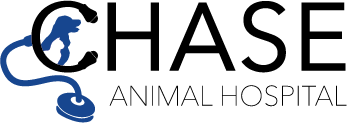Pet Health Articles
-
A fecal Baermann is a special fecal test used to diagnose infection by parasites that pass larvae in stool instead of eggs. A small golf-ball sized sample of fresh stool is mixed with warm water to encourage larvae to separate from the fecal material to allow identification. The most common parasite diagnosed with a fecal Baermann is lungworm, which typically causes signs of coughing.
-
A fecal flotation is a screening test for internal parasites. It is performed by mixing a small sample of stool with a special solution that causes any parasite eggs to float to the surface of the solution. Young pets need multiple fecal flotations to screen for infection, while adults may only need a fecal screening once yearly unless they are at higher risk of infection.
-
A fecal occult blood test screens for the presence of hemoglobin (a component of red blood cells) in a fecal sample. Many conditions can cause blood to appear in the stool including intestinal ulceration, neoplasia, dental disease, and parasites.
-
Fechavirus is a type of parvovirus. It is a newly discovered gastrointestinal virus identified in cats in 2018. The significance of fechavirus in pet cats is unknown at this point. The most common signs associated with fechavirus are diarrhea and vomiting. If your veterinarian suspects fechavirus, your cat will receive supportive care to control clinical signs and prevent dehydration.
-
Cat food has been made so palatable that it can easily create gluttonous behavior. Meal feeding and portion control are important to prevent obesity. Owners should not give in to begging behavior. Cats that are still hungry after their meal can be supplemented with snacks such as green vegetables recommended by your veterinarian. Cats that eat too quickly can be fed creatively to slow down eating.
-
Dog food has been made so palatable that it can easily create gluttonous behavior. Meal feeding and portion control are important to prevent obesity. Owners should not give in to begging behavior. Dogs that are still hungry after their meal can be supplemented with snacks such as green vegetables recommended by your veterinarian. Dogs that eat too quickly can be fed creatively to slow down eating.
-
The goal of feeding growing kittens is to lay the foundation for a healthy adulthood. Portion feeding is recommended to maintain a good body condition. Proper nutrition is critical to the health and development of kittens, regardless of breed, and it directly influences their immune system and body composition. An optimal growth rate in kittens is ideal; it is a slow and steady growth rate that allows the kitten to achieve an ideal adult body condition while avoiding excessive weight and obesity. Growing kittens need higher amounts of all nutrients in comparison to adult cats, but excess energy calories and calcium can create serious problems. Preventing obesity must begin during the weaning stage and continue through to adulthood and old age. Together with your veterinarian and veterinary healthcare team, you can help your kitten grow into as healthy of an adult cat as possible.
-
The goal of feeding growing puppies is to lay the foundation for a healthy adulthood. Proper nutrition is critical to the health and development of puppies, regardless of breed, and it directly influences their immune system and body composition. An optimal growth rate in puppies is ideal; it is a slow and steady growth rate that allows the puppy to achieve an ideal adult body condition while avoiding excessive weight and obesity. Growing puppies need higher amounts of all nutrients in comparison to adult dogs, but excess energy calories and calcium can create serious problems. Together with your veterinarian and veterinary healthcare team, you can help your puppy grow into as healthy of an adult dog as possible.
-
Over 60% of cats in North America are either overweight or obese, so paying attention to the balance between activity and calorie intake is important. Nutrient formulation and portion control are the two most important aspects of weight control. Once you have chosen a formula and have calculated a reasonable daily portion based on calorie density, the best way to stay on track and prevent unwanted weight gain is to combine portion control with regular, formal weigh-ins.
-
Dogs and cats have different nutrient requirements, which is why separate commercial pet foods are made for each species. Even pets of the same breed or body weight have unique calorie needs, so pet parents should feed them in separate bowls to avoid having any pets gain or lose weight. Diets designed for young growing puppies or kittens are different from adult dog or cat foods, so pups/kittens should be fed separately from adults until around the age of 11-12 months. Body condition scoring should be a part of regular monitoring to make sure each pet does not gain (or lose) weight.

